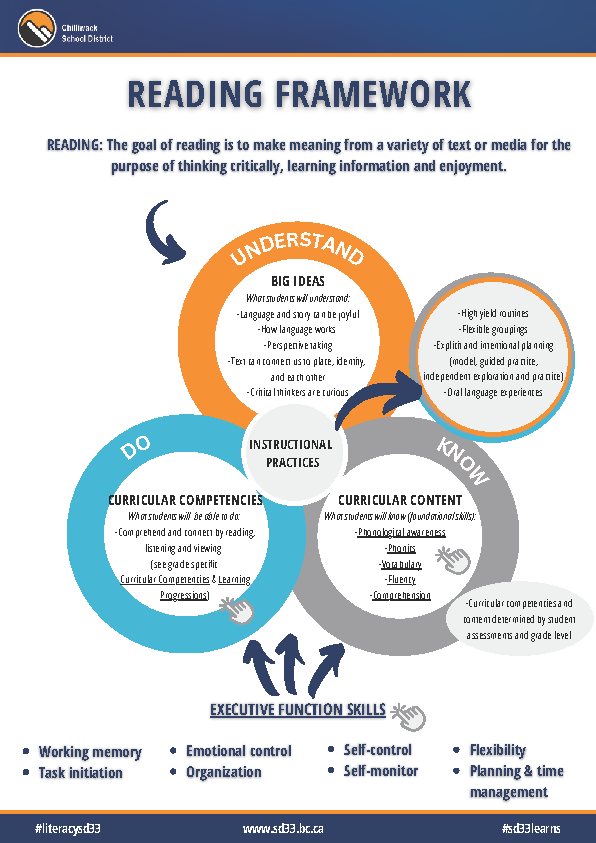The Chilliwack School District recognizes that the instruction of literacy should be flexible and responsive to student learning goals. Comprehensive literacy instruction focuses on meeting the emerging needs of students in comprehension, phonics, fluency, phonemic/phonological awareness, and vocabulary. Learners can express themselves through oral language and writing. Educators use district assessments, class assessments, observations, daily progress monitoring, and conferences to determine student goals and plan for instruction. When lesson planning, educators consider resources and practices which are engaging and motivating to students.
Literacy is developmental and not all students reach the same developmental phase at the same time. Educators recognize these differences and use a variety of approaches and resources to support student learning. Educators use explicit:
• Whole class, small group, and one-to-one instruction
• Teacher modelled reading and writing
• Guided and shared reading and writing
• Strategies to foster independent reading and writing
Learning to read is complex and is influenced by many factors such as motivation, engagement and executive functioning skills. Reading researchers, Nell Duke and Kelly Cartwright, offer a model to illustrate the key components of learning to read: active self-regulation, word recognition, language comprehension and bridging processes.


